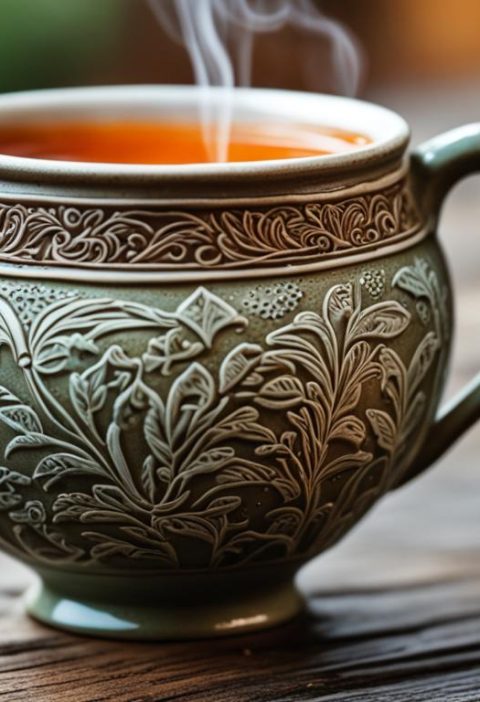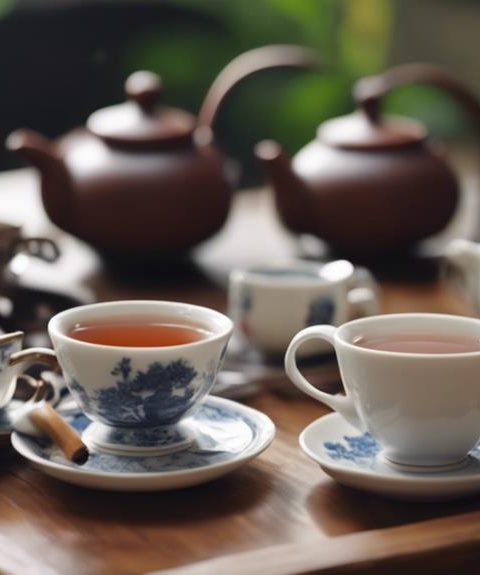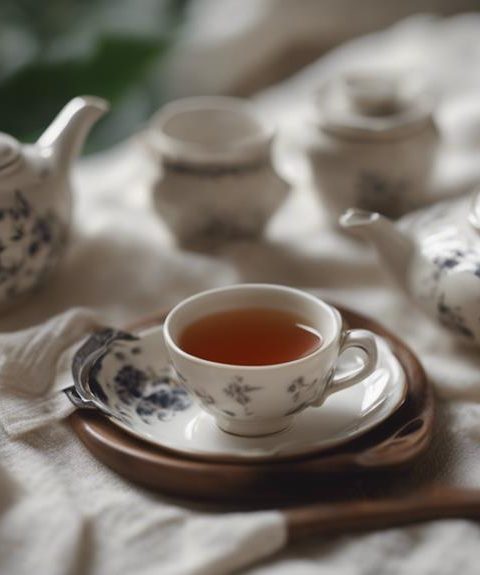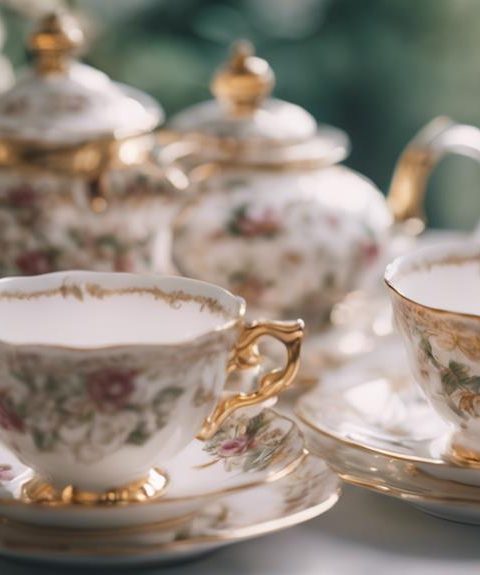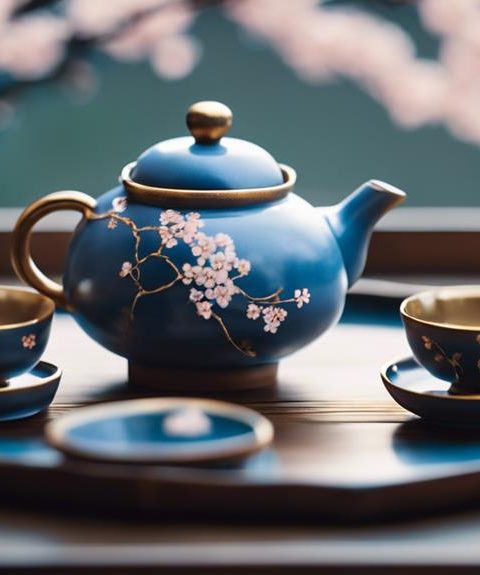Japanese Tea Sets, like the elegant Kyusu, hold a timeless allure that transcends mere functionality. As an aficionado of Japanese tea culture, I delve into the exquisite world of Kyusu and other tea sets to uncover their hidden charm and significance.
Having explored the intricate details and craftsmanship of various tea sets firsthand, I bring a unique perspective to unraveling the mystique behind these traditional Japanese artifacts. Join me on a journey through the delicate artistry and cultural nuances encapsulated in each piece, from the graceful curves of a Kyusu to the intricate motifs adorning porcelain teacups.
Discover the artistry, history, and rituals intertwined within Japanese tea sets as we unravel the captivating beauty of Kyusu and delve beyond its surface elegance. Explore the rich heritage and intricate craftsmanship that make each tea set a masterpiece in its own right. Join me in unlocking the secrets of these exquisite treasures that embody the essence of Japanese tea culture.
The Artistry of Japanese Tea Sets
Exploring the Craftsmanship
Craftsmanship in Japanese tea sets is a testament to exquisite artistry. The delicate process of creating these sets involves skilled artisans dedicating themselves to perfecting each detail. From the shaping of the clay to the painting of intricate designs, every step showcases the meticulous craftsmanship that embodies Japanese tea culture.
I appreciate the devotion shown by artisans in crafting these tea sets. Their commitment to preserving tradition while infusing creativity results in timeless pieces that hold cultural significance.
Materials and Design
Japanese tea sets boast a harmonious blend of materials and design elements. The choice of clay, often sourced from specific regions in Japan, contributes to the unique characteristics of each set. Notably, the porous nature of clay in Kyusu allows tea to breathe, enhancing its flavor profile during brewing.
In my collection, I have tea sets featuring diverse designs, from simple and elegant patterns to elaborate motifs inspired by nature. Each design tells a story and adds a touch of artistry to the tea-drinking experience.
Understanding Kyusu: The Heart of Japanese Tea Culture
As an avid collector of Japanese Tea Sets, I can attest to the timeless charm and cultural significance of the elegant Kyusu. Let’s delve into the history and evolution of this iconic vessel that encapsulates the essence of Japanese tea culture.
History and Evolution
Kyusu, a traditional Japanese teapot, has a rich history dating back to the 17th century during the Edo period. Originally designed for brewing green tea, Kyusu has evolved over the centuries to cater to different tea varieties, including sencha and gyokuro. The teapot’s unique side handle and spout design are not merely aesthetic choices but serve a functional purpose in providing better control over the pour and infusion of tea leaves.
Varieties and Uses
When exploring Kyusu, one encounters a range of styles and materials that cater to diverse preferences and brewing techniques. From classic banko-yaki clay pots that enhance the flavor of tea to sleek porcelain designs suitable for delicate teas, each Kyusu offers a unique brewing experience. Kyusu sets often include matching cups and a teapot warmer, adding a touch of elegance to the tea-serving ritual.
By understanding the intricate craftsmanship and cultural significance behind Kyusu, one can truly appreciate its role as the heart of Japanese tea culture. As I continue to expand my collection, I find each Kyusu to be a masterpiece that not only brews tea but also preserves a tradition steeped in artistry and heritage.
Beyond Kyusu: Other Elements of Japanese Tea Sets
As I delve deeper into the world of Japanese tea sets, I uncover other essential elements that contribute to the beauty and functionality of this traditional art form.
Tea Bowls: Chawan and Matchawan
In my exploration, I encounter the exquisite Tea Bowls, known as Chawan and Matchawan, which play a significant role in the Japanese tea ceremony. Chawan, the larger tea bowl, is used for preparing and drinking matcha, the powdered green tea. Matchawan, on the other hand, is a smaller version that allows for a more intimate tea-drinking experience. These bowls, often handmade by skilled artisans, reflect the artistry and cultural significance of Japanese tea ceremonies.
Tea Caddies: Natsume and Chaki
The Tea Caddies, including Natsume and Chaki, are indispensable components of a traditional Japanese tea set. Natsume, a small container typically made of wood or lacquer, is used to store powdered tea. Chaki, a larger caddy made of ceramic or metal, houses loose tea leaves. Both caddies not only preserve the freshness of the tea but also add elegance to the tea preparation ritual, showcasing attention to detail and craftsmanship.
Serving Pieces: Yuzamashi and Shiboridashi
In my collection of Japanese tea wares, I come across the essential Serving Pieces – Yuzamashi and Shiboridashi. Yuzamashi, a water cooler or cooling container, is used to control the water temperature when brewing tea, ensuring the perfect infusion without scalding the delicate leaves. Shiboridashi, a small teapot without a handle, allows for the gentle pouring of tea, extracting the full flavor of the leaves with precision. These serving pieces exemplify the meticulousness and precision required in the art of Japanese tea brewing.
These elements beyond Kyusu enrich the tea-drinking experience, embodying the artistry, culture, and tradition of Japanese tea sets. Each piece contributes to a harmonious ritual that celebrates the beauty of simplicity and the reverence for nature, inviting tea enthusiasts to immerse themselves in a world where every sip tells a story of craftsmanship and heritage.
The Ceremonial Aspect of Japanese Tea Sets
As I dive deeper into the world of Japanese tea sets, I unveil the profound ceremonial aspect that these exquisite pieces embody. Let’s explore how these sets play a pivotal role in the revered Chanoyu, the Japanese tea ceremony, showcasing the essence of tradition and cultural significance.
The Role in Chanoyu (Tea Ceremony)
In the realm of Chanoyu, Japanese tea sets take on a sacred role, symbolizing harmony, respect, purity, and tranquility – the core principles of this ancient ceremony. The Kyusu, Chawan, Matchawan, Natsume, Chaki, Yuzamashi, and Shiboridashi come together as essential components, each contributing to the ritual in a unique way. These meticulously crafted pieces not only enhance the aesthetic appeal of the ceremony but also elevate the sensory experience of tea-drinking, creating a harmonious blend of functionality and artistry.
Etiquette and Methodology
The etiquette surrounding Japanese tea sets in the tea ceremony is steeped in tradition and mindfulness. From the precise movements of preparing and serving tea to the respectful gestures of receiving and consuming it, every action is imbued with symbolism and respect for the tea, the guests, and the host. The methodology followed in the ceremony reflects a deep understanding of the cultural values and practices that have been passed down through generations, making each moment a connection to the past and a celebration of the present.
In unraveling the ceremonial aspect of Japanese tea sets, I uncover a world where tradition meets art, and every sip of tea becomes a journey through history and culture.
Collecting and Caring for Japanese Tea Sets
Tips for Beginners
As a beginner tea enthusiast exploring the world of Japanese tea sets, I recommend starting your collection with a traditional Kyusu. Its iconic design and practicality make it a valuable addition to any tea connoisseur’s repertoire. When purchasing a Kyusu, look for authentic handcrafted pieces with a fine mesh filter to ensure a smooth brewing experience. Additionally, consider acquiring essential accessories like Chawan for tea bowls and Natsume for storing powdered tea, enhancing your tea set’s completeness and functionality.
Maintenance and Preservation
To maintain the beauty and longevity of your Japanese tea sets, I suggest following these care tips. After each use, gently rinse your Kyusu and tea bowls with warm water to remove any residue. Avoid using soap, as it can alter the flavor of your teas. Store your tea sets in a cool, dry place away from direct sunlight to prevent damage. Periodically clean your tea accessories with a soft cloth to preserve their luster. By caring for your Japanese tea sets diligently, you can enjoy their beauty and utility for years to come.
Key Takeaways
- Japanese tea sets such as Kyusu embody exquisite artistry and craftsmanship that showcase the meticulous devotion of skilled artisans.
- The choice of materials like clay in Kyusu and diverse design elements in Japanese tea sets contribute to a unique and culturally significant tea-drinking experience.
- Kyusu, the heart of Japanese tea culture, has a rich history dating back to the Edo period and continues to evolve in styles and materials for various tea varieties.
- Beyond Kyusu, elements like Tea Bowls, Tea Caddies, and Serving Pieces enrich the tea-drinking ritual, reflecting the artistry, culture, and tradition of Japanese tea sets.
- Japanese tea sets play a pivotal role in the revered Chanoyu, the tea ceremony, symbolizing harmony, respect, purity, and tranquility, with meticulous etiquette and methodology.
- Beginners can start their Japanese tea set collection with a traditional Kyusu, focusing on authenticity and essential accessories, while maintaining and preserving their tea sets for longevity and enjoyment.
Conclusion
Exploring the world of Japanese tea sets has been a fascinating journey. From the intricate craftsmanship of the Kyusu to the essential elements like Chawan and Natsume, each piece tells a story of tradition and elegance. The Japanese tea ceremony, with its emphasis on harmony and respect, adds a layer of cultural significance to these sets. As we embrace the beauty and functionality of these pieces, we also honor the deep-rooted values they represent. Whether you’re a seasoned collector or a novice enthusiast, caring for these sets ensures their longevity and beauty for years to come. Embrace the artistry of Japanese tea sets, and let each sip of tea transport you to a world of tranquility and tradition.
